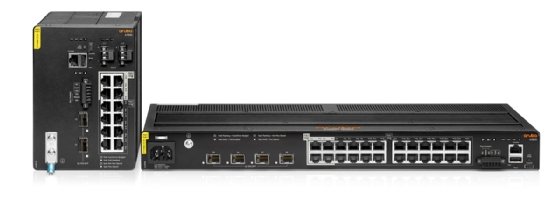
chris - Fotolia
Aruba adds network auto-fixes to AI Insights
Aruba's self-correct feature in AI Insights automatically fixes problems deemed safe to repair based on customer feedback.
Aruba customers will soon discover that the company's cloud-based network management system automatically corrects some wired and wireless network problems.
This week, the Hewlett Packard Enterprise subsidiary introduced upcoming corrective features in AI Insights, a dashboard within the Aruba Central network management console. AI Insights predicts or identifies problems based on telemetry data gathered from access points (AP), switches and gateways.
Starting in the fall, AI Insights will fix some problems by default. Aruba chose the issues to correct automatically based on customer feedback, said Scott Calzia, vice president of product marketing.
For example, suppose an excessive number of 5 GHz-capable mobile devices connect to an AP's 2.4 GHz wireless band. In that case, Insights will lower the transmission power and raise that of the 5 GHz band. The adjustment would increase the likelihood of devices switching to the higher-performing underutilized band.
Another example of an automated change involves devices having trouble obtaining an IP address from a DHCP server to connect to a wireless network. That problem type is more difficult to fix because there are many possible reasons for it.
In that case, AI Insights will correct what it knows is safe, such as re-establishing a connection to a VLAN, leaving more complicated possibilities to network managers.
Another example is connectivity problems associated with a DNS server. If congestion is the trouble source, then AI Insights would notify Central users without making changes.
"The changes that we would make are those that we determine are going to make the network more efficient," Calzia said. However, Aruba can't guarantee that what it fixes is the root cause of a network problem.
Calzia did not know how many corrective actions AI Insights would take by default. Also, AI Insights works only with APs running Aruba's latest AOS 10 operating system.

Improvements for IoT operations
Along with Central's AI Insights enhancements, Aruba will add more device information in the management's console's IoT dashboard. The dashboard provides data transport visibility and information on connected IoT devices.
New device details will include battery life and firmware version. Also, Aruba will integrate an app store into the dashboard so that customers can access software from the company's IoT device partners.
Central's management capabilities over IoT devices will depend on the features available through manufacturers' APIs, Calzia said.
Finally, in the fall, Aruba will start incorporating its ClearPass network access control product into Central.
Initially, Aruba will incorporate the baseline ClearPass features in Central, Calzia said. In essence, customers will have access to ClearPass's policy manager to authenticate devices and set the hardware's permissions and restrictions on the network. They can also deploy those access rules on enforcement devices, such as APs and switches.
"This is the beginning of the integration of ClearPass with Central," Calzia said.
Aruba also plans to release new hardware in the fall. The products include the CX 4100i series of ruggedized switches and the CX 6000 series of Layer 2 switches for remote offices and small and medium-sized businesses.
Aruba built the CX 4100i to provide wired connectivity to industrial IoT devices used in harsh environments with extreme temperatures.
Starting prices are $4,999 for the CX 6000 series and $1,049 for the CX 4100i series. Both switch series run Aruba's AOS-CX operating system.






